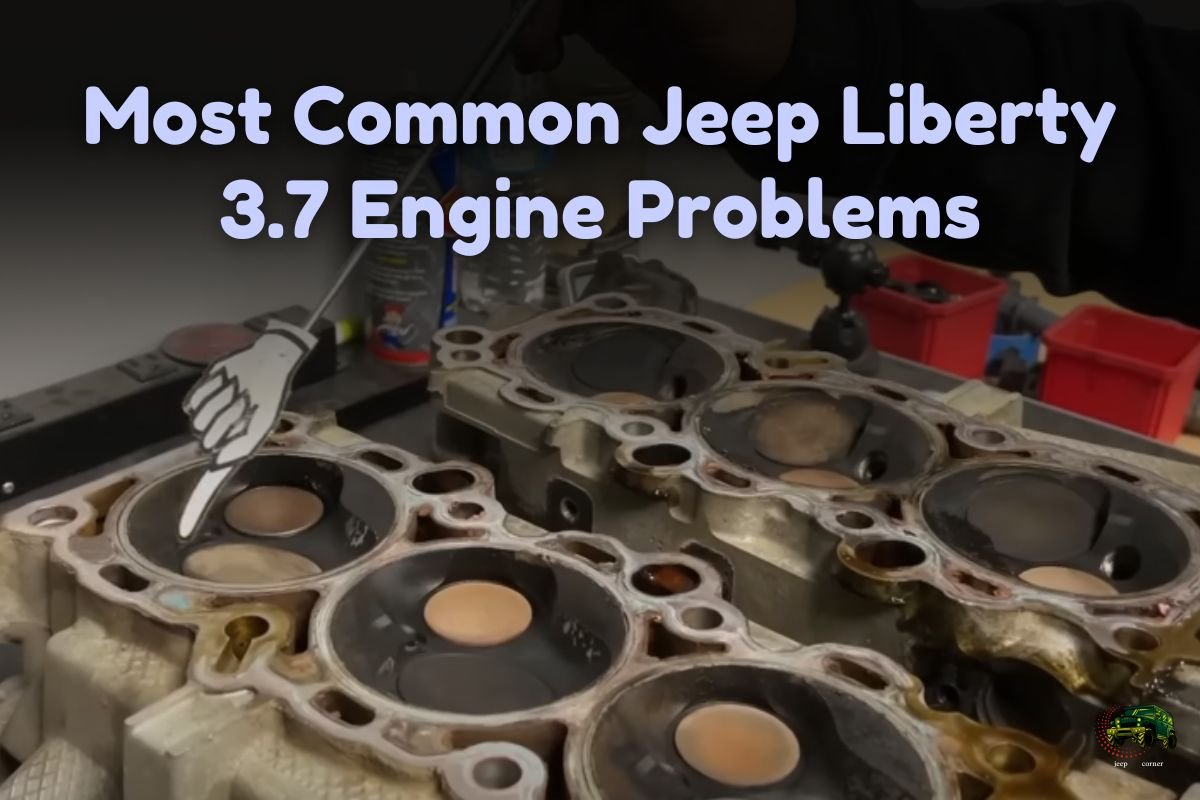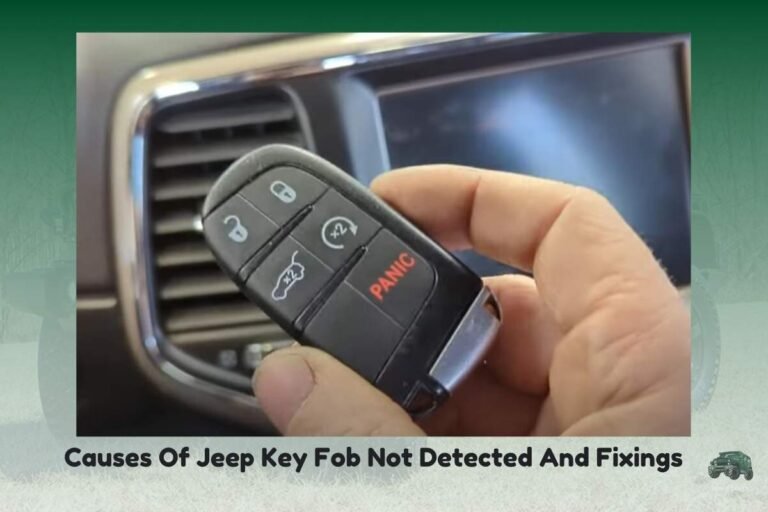Most Common Jeep Liberty 3.7 Engine Problems [Problems And Solutions]
The engine is the vehicle’s beating heart and if it stops working, it can have a devastating effect on the vehicle as a whole. Although Jeeps are generally trusted vehicles, some 3.7-liter engines have experienced issues.
So, what are the most common jeep liberty 3.7 engine problems? The Jeep Liberty has a 3.7L engine, which is incredibly effective and generally reliable. But there have been some minor concerns with the Jeep Liberty 3.7 Engine that haven’t gone overlooked by drivers.
The dependability and performance of the engine are two of the most crucial factors to think about when choosing a car. So the following sections of this article will focus on the most typical issues experienced by drivers of Jeep Libertys equipped with 3.7-liter engines.
Table of Contents

About the Jeep 3.7 Engine
Many Chrysler cars, notably the Jeep, were equipped with the 3.7L V6 engine. More or less all of the Jeep models have this feature. Thus, cast iron is used for the block, and the cylinder banks are set at an angle of 90 degrees from one another.
Although the design was widely used in the past, it was never the most efficient option. Cylinder heads are made of metal, and each one has two valves. Each bank of cylinders is equipped with a single overhead camshaft. Here we can say that the engine represents the intermediate ground.
Most Common Jeep Liberty 3.7 Engine Problems (Explained)
Below we are going to talk about all the possible problems that can occur with a Liberty 3.7 Engine. We will further explain how to have a cure for them in your way or through mechanics.
Broken valve seats
Valve seat failure is a major contributing factor. Located in the engine head, this component ensures a tight seal between the closed exhaust and intake valves. Each of the valves may be closed if its head is resting against the valve seat.
The most prevalent cause of valve seat failure in Jeep 3.7 PowerTech engines is high operating temperatures. This metal seat can pop out of place if the engine gets too hot and this will cause the metal to expand and the seat to become loose.
So why exactly is it a negative thing if the valve seat breaks? When a control valve wears down, it prevents the valve from closing completely, preventing the cylinder from being compressed. This causes a reduction of pressure within the cylinder.
Likewise, when a cylinder’s compression is low, air will leak out as it attempts to compress air, rendering the cylinder ineffective. This will have severe effects on performance, and If ignored for too long, may cause additional engine issues.
PCV valve stops functioning
Another possible cause could be the PCV valve failure. If it happens, the engine’s exhaust can escape into the air. Thus, inadequate engine performance, oil that turns to sludge, leaking valve covers, and excessive fuel consumption are all possible outcomes of neglected PCV valve maintenance.
Besides, when the PCV fails, toxic gases may be released. So when the PCV valve is malfunctioning, you may also experience brief delays in acceleration.

Landings with the piston ring
There is inefficiency in the design of the piston ring landings. Having the car run faster than it needs to is a side effect of this. In this case, drop ports at the top and inadequate block size only exacerbate the issue. So, sludge can form in the engine if these two things are combined.
This can eventually lead to bottlenecks in the engine, preventing oil from reaching its intended destination. As a result, disruption of the engine from a lack of oil, which causes overheating and subsequent engine seizure, leads to the vehicle’s untimely demise.
There’s a good chance that you’ll have to rebuild or replace the engine if the situation gets bad enough to cause damage or a complete breakdown. However, the damage could be avoided with proper maintenance and temperature checks at regular intervals.
Earring studders
The 3.7L uses a single overhead camshaft. Overhead cam engines do not technically require lifters because the camshaft is housed within the cylinder head. This engine, on the other hand, has mechanical valve lash adjusters in place of conventional lifters.
When compared to conventional lifters, these lash adjusters are responsible for keeping this distance at zero. They are placed in the head and keep a tiny amount of space between the cam follower as well as the valve.
The lash adjusters frequently become jammed inside the 3.7L motor. Thus, the majority of these incidents can be traced back to oil quality concerns. It can also become dislodged if you use oil that is too thick or if you go too long between oil changes.
Whenever this occurs, the valve can’t find its way between both the open and shut states, resulting in catastrophic performance concerns and other infrequent engine malfunctions.

What are the Solutions to Fix the Problems?
As we promised earlier, we don’t just list problems, we also provide answers to everyone. Here are the solutions to the problems.
Valve seat breakdown
There is no other solution besides rebuilding or replacing the cylinder head if the valve seats wear out or break. In the absence of a machinist’s background, you should probably not attempt the repair yourself.
Even if you do it by yourself, make sure the engine never gets too hot. This is one of the greatest ways to avoid the problem. Valve seats are easily destroyed by high temperatures. So it’s worth keeping an eye on your engine’s temperature and turning it off if it starts to rise above safe levels.
Besides, maintaining a healthy coolant level in your engine is essential. Adding cooling changes is something to think about if your engine has been upgraded in terms of power, but I wouldn’t suggest it for standard engines.
Landings with the piston ring
Piston rings serve specific functions in a variety of engines. To prevent the crankcase oil from contaminating the barrel liner and piston in a truck bed engine, an oil extractor ring is installed. However, if the piston ring is worn out, you’ll need to replace the piston.
The markings on the fresh or spare ring are compared to those on the old ring to ensure that they are in the same degree or position before the ring is installed.
If the previous marking on the piston ring has been removed, the piston ring must be identified according to the handbook before being inserted into the correct groove.
Earring studders
Replacement of the lash adjuster itself will be your only option if it becomes stuck. This issue often affects just one cylinder, thus fixing that cylinder should be sufficient.
However, if either you or your technician are already going to the basement, it is best to replace all four at once. The best course of action is to replace the current equipment with a high-performance, reliable set.
PCV valve stops functioning
To fix this, simply buy a new PCV Valve and install it.

FAQs
Couldn’t find the appropriate answer in the above article? Don’t worry, we got an extra part for you through this section.
What are the issues with jeep liberty?
The Jeep Liberty had numerous mechanical issues, the most common of which were leaks of fluid, the activation of the check engine light, and misfires caused by malfunctioning intake valves.
What are broken valve seats?
Valve seat failure is a major contributing factor. Located in the engine head, this component ensures a tight seal between the closed exhaust and intake valves. Each of the valves may be closed if its head is resting against the valve seat.
Key Takeaways
Every wonderful thing has its quirks, and the 3.7L engine in the Jeep Liberty is no exception. In the above article, we have learned about the most common jeep liberty 3.7 engine problems.
It covers the majority of the information you need to decide on the engine in a vehicle, which is always a big relief. So whenever your engine is running through some problems, you can get a check by yourself; but we will suggest leaving it to the mechanic.




![Fix Jeep Wrangler Engine Hesitation During Acceleration [Causes & Solution]](https://jeepcorner.com/wp-content/uploads/2023/11/Fix-Jeep-Wrangler-Engine-Hesitation-During-Acceleration-768x448.png)



